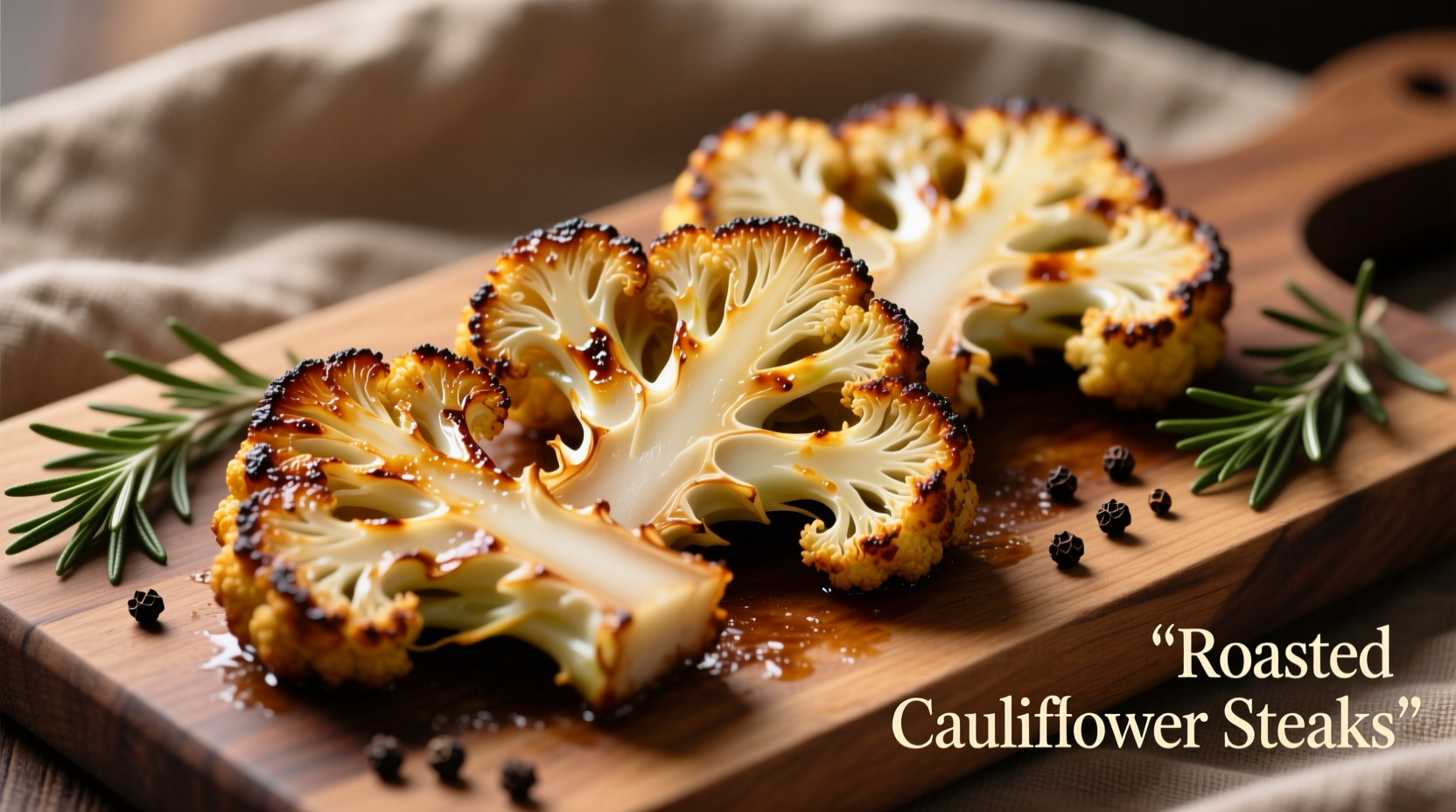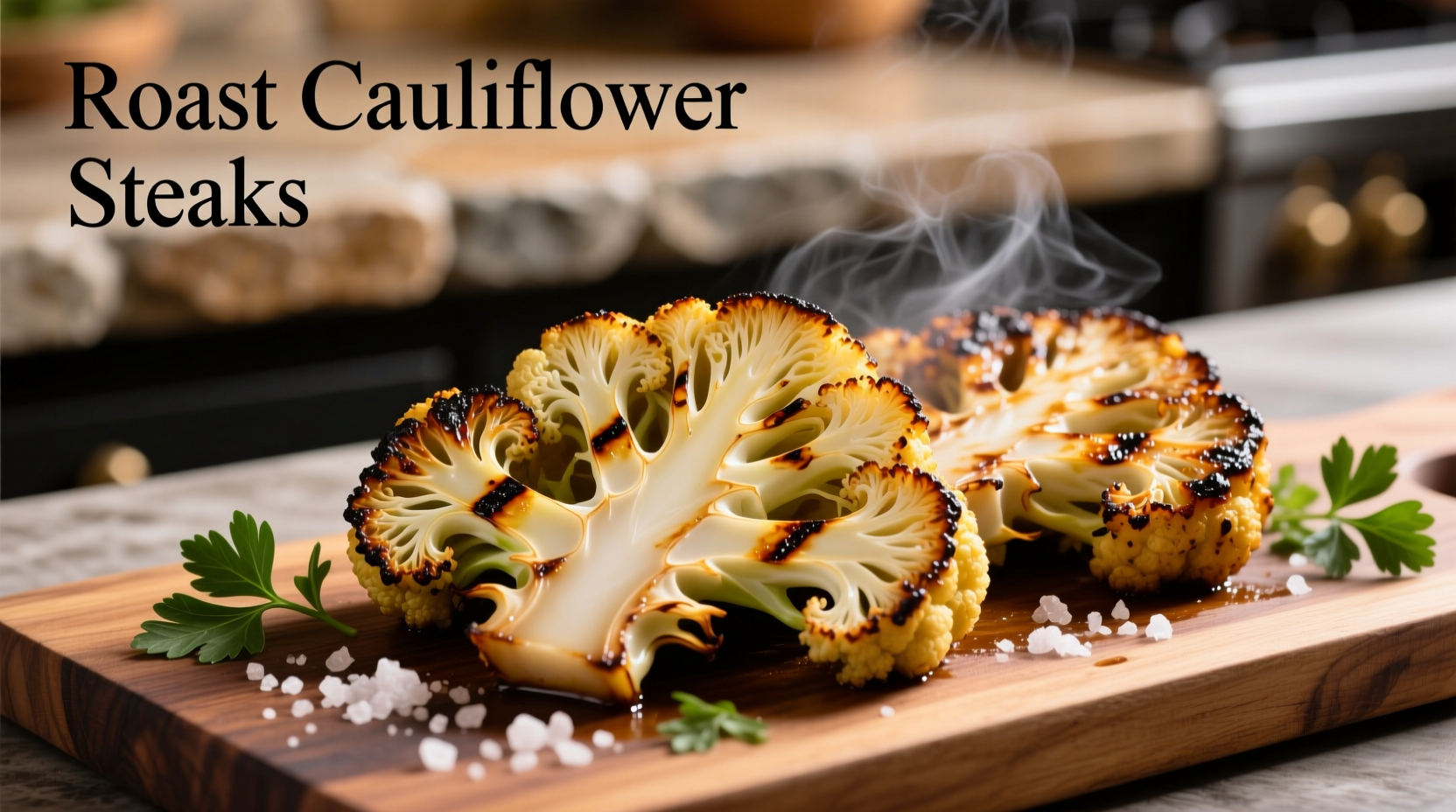Forget boring vegetable sides. Roasted cauliflower steaks have revolutionized how home cooks approach this cruciferous vegetable, turning it into a centerpiece worthy of any dinner plate. As a culinary technique, slicing cauliflower vertically into thick "steaks" creates dramatic presentation while maximizing surface area for perfect caramelization—a game-changer for texture and flavor development.
Why Cauliflower Steaks Outperform Florets
When you slice cauliflower vertically into 1-1.5 inch thick planks instead of breaking it into florets, you create structural integrity that prevents disintegration during roasting. Food science confirms that thicker cuts develop superior Maillard reaction—the chemical process responsible for browning and complex flavor development—compared to smaller pieces that often steam rather than roast.
| Preparation Method | Surface Area | Caramelization Potential | Structural Integrity |
|---|---|---|---|
| Traditional florets | High (multiple small pieces) | Moderate (uneven browning) | Low (breaks down easily) |
| Cauliflower steaks | Optimal (controlled surface) | High (even, deep browning) | High (holds shape) |
Your Essential Cauliflower Steak Toolkit
Success starts with proper equipment selection. A sharp 7-8 inch chef's knife provides the clean cuts needed to maintain structural integrity. For roasting, choose heavy-duty sheet pans—thin pans warp under high heat, creating uneven cooking surfaces. Line pans with parchment paper for effortless release without sacrificing crispiness.
Mastering the Perfect Cut
Place the cauliflower head stem-side down. Remove outer leaves but keep the core intact—this is crucial for holding "steaks" together. Using a sharp knife, slice vertically through the core into 1-1.5 inch thick planks. Most heads yield 2-3 perfect center steaks plus smaller outer pieces you can roast as regular florets.

Professional Roasting Technique
Preheat oven to 425°F (220°C)—this temperature balances caramelization without burning. Toss steaks in 1.5 tbsp olive oil per head, ensuring even coating on all surfaces. Season generously with salt (¼ tsp per steak) before roasting. Place steaks on prepared pan, leaving 1 inch between pieces for proper air circulation.
Roast 20-25 minutes, flipping halfway through, until deeply golden brown and tender when pierced with a knife. The USDA Food Safety and Inspection Service confirms that roasted vegetables reach safe internal temperatures through this process, with no minimum temperature requirement for plant-based foods.
Flavor Enhancement Strategies
Elevate your cauliflower steaks with these chef-approved techniques:
- Pre-roast treatment: Brush with Dijon mustard before oiling for tangy complexity
- Spice timing: Add delicate herbs like dill or parsley after roasting to preserve freshness
- Acid balance: Finish with lemon zest or apple cider vinegar to cut richness
- Texture contrast: Sprinkle toasted pine nuts or breadcrumbs before serving
Perfect Pairings and Serving Ideas
Cauliflower steaks shine when paired thoughtfully. Serve with:
- Creamy elements: Tahini sauce, lemon-dill yogurt, or roasted garlic aioli
- Grain bases: Farro pilaf, quinoa, or wild rice for complete vegetarian meals
- Protein companions: Lentils, chickpeas, or white beans for added substance
- Seasonal accents: Roasted cherry tomatoes in summer, caramelized onions in winter
Storage and Leftover Wisdom
Store cooled leftovers in airtight containers for up to 4 days. When reheating, the Food Safety Authority of Ireland recommends using dry heat methods like oven reheating (350°F for 10-15 minutes) rather than microwaving to maintain texture. Leftover steaks transform beautifully into next-day creations: chop for grain bowls, puree for soups, or slice thin for cauliflower "steak" sandwiches.
Troubleshooting Common Issues
Problem: Steaks falling apart during flipping
Solution: Ensure core remains intact during cutting and avoid overcrowding the pan
Problem: Uneven browning
Solution: Rotate pan halfway through cooking and flip steaks precisely at 12-15 minute mark
Problem: Soggy texture
Solution: Increase oven temperature by 25°F and reduce oil by 25% for better evaporation
Historical Context of Cauliflower Preparation
While modern "cauliflower steaks" gained popularity through contemporary vegetable-forward cuisine, the technique builds on centuries of cruciferous vegetable preparation. Historical records from the 16th century Mediterranean show cauliflower roasted whole over open flames—a precursor to today's steak method. The vertical slicing technique emerged from professional kitchens in the early 2010s as chefs sought to showcase vegetables as centerpieces rather than side dishes, aligning with growing consumer interest in plant-forward eating documented by the International Food Information Council.











 浙公网安备
33010002000092号
浙公网安备
33010002000092号 浙B2-20120091-4
浙B2-20120091-4